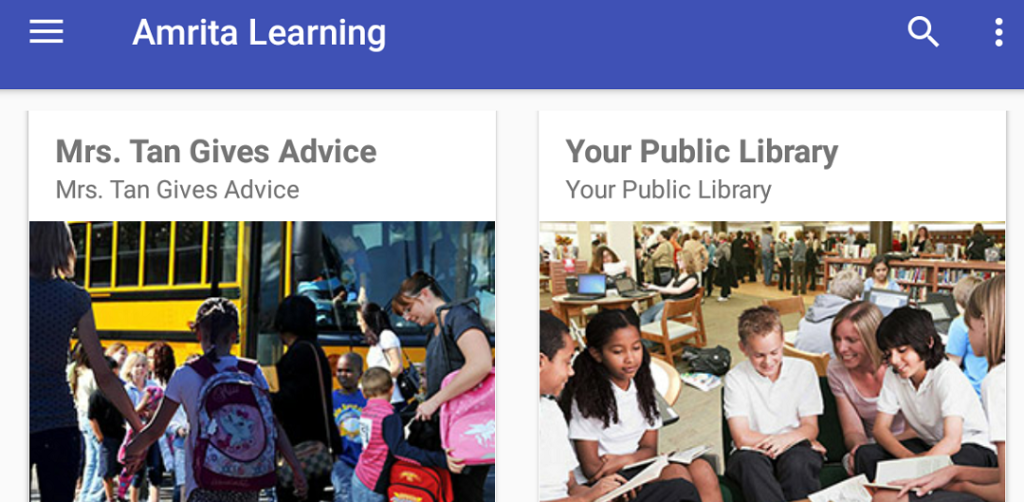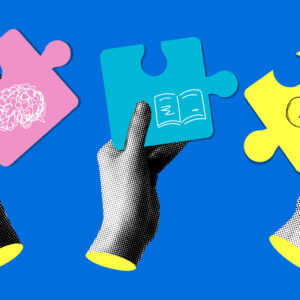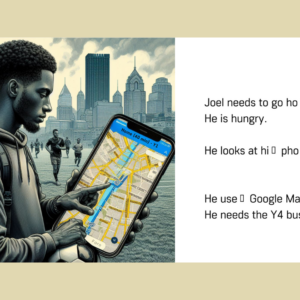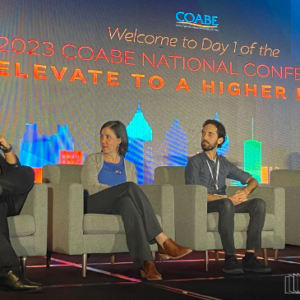AmritaCREATE’s Approach to Learner Usage and Engagement in the Xprize Adult Literacy Competition
By Rita Sutcliffe, English Language Content Manager, AmritaCREATE
Clear instruction at the appropriate level and engagement of the learner are basic educational issues which cut across all subject matter. AmritaCREATE, an educational research laboratory affiliated with Amrita Vishwa Vidyapeetham, has developed several learning solutions that address these challenges across a wide ranging population of learners. These learners include children and adults in both urban and rural settings across diverse cultures. Our solutions are also intentionally highly value-based, aimed at creating upstanding and healthy citizens, wherever they reside. Our latest project is an adult literacy mobile app, one of five finalists in the Xprize Adult Literacy competition.
A Two-Track Adult Literacy App for English Language Learners and Native Speakers
Our current project, has been particularly challenging due to the number of learning issues to be faced by one educational solution in a single app. The Xprize contest rules stipulated that the app should contain material for both English as a second language (ESL) and native speakers (NS). We decided it was essential to develop two tracks within the app that would address the unique needs of both learning groups. For the ESL track we focused on native speakers of Spanish, as that is the largest group of ESL learners in the US. We provided as much Spanish support as possible to help these learners navigate the app on their own, whatever their level of English understanding. That support included bilingual vocabulary study, cognates, and Spanish language audio support.
The native speaker track faced its own unique challenges as it encompasses a very diverse group of learners. Also, lack of usage and a high drop out rate are major challenges in successfully teaching adults, and a goal of the Xprize Adult Literacy Challenge was to find a way to engage the adult learners sufficiently to keep them using the app enough to improve their literacy skills. To this end, we tailored our learning material to the needs and interests of these diverse groups in the hopes of motivating them to use the app even for a short time every day or at the least several times a week.
ESL Track
A survey of most ESL apps showed a lot of useful material presented in a a dry format and designed to be used in a classroom or tutorial setting where there would be a teacher to guide the learner and answer questions. Our app needed to be a lot more vibrant and would have to have a way for the learners to understand and correct mistakes on their own. For the ESL app, we added the maximum Spanish support we could without making the lessons too unwieldy. We developed an approach combining realistic stories of daily problems in the life of a Spanish language immigrant in the US and useful information focusing on what an immigrant would need to navigate American life. In this way, we aimed to teach English successfully and include good values, important daily life skills, and information for healthy living.
We know that women are often discouraged from taking courses and may not have a way to get to a brick and mortar classroom consistently. They may lack self-confidence and fear embarrassment. However, women are also highly motivated learners who understand that literacy and education are the keys to a successful life in the US. At the least, they want to be able to facilitate their children’s success in school, help them with their homework, and also be able to earn money outside the home when possible. English is key for their path to citizenship as well.
With this in mind, we made our main character in the ESL learning stories a Latina who is learning online. As her story unfolds, we meet a supportive husband and typical kids growing up in the US. This family faces the usual parenting challenges, but they are complicated by understanding this new culture and navigating it in a new language. Stories of their family and friends are entwined with material teaching how to do every day chores, from how to find the public library to what to know about parent-teacher conferences.
What We Learned about our ESL Approach
Looking at usage data we discovered:
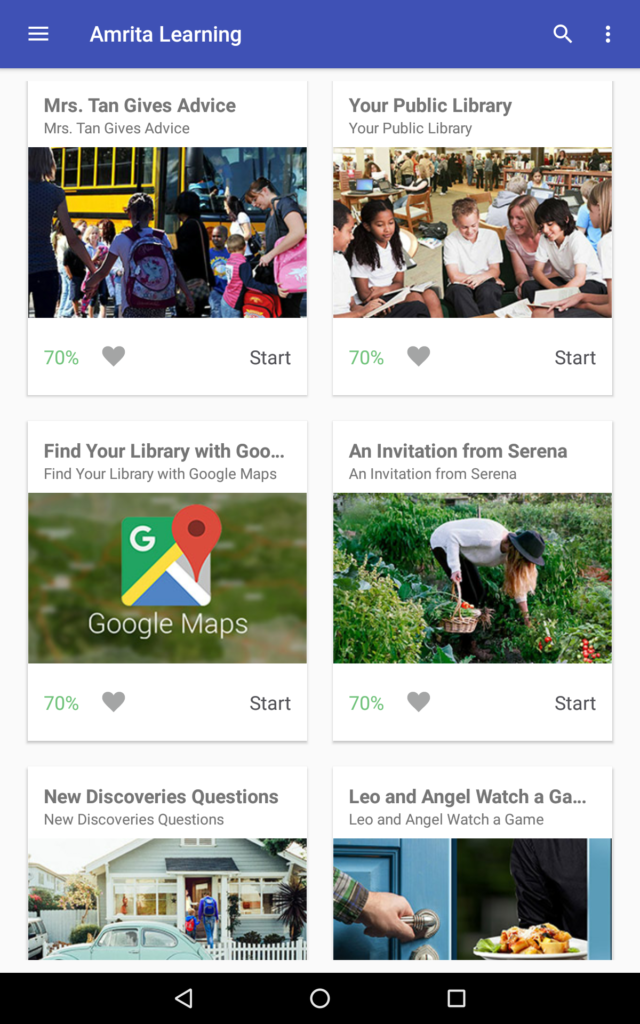 Learners were very engaged with the material and motivated to learn. They were keenly interested in mastering the material and would redo the lessons numerous times.
Learners were very engaged with the material and motivated to learn. They were keenly interested in mastering the material and would redo the lessons numerous times.- Our most successful material in terms of usage were the stories and lessons around subjects like parent-teacher conferences. This shows the need for this kind of material and its effectiveness in stimulating usage.
- Our learners started at a much lower level of reading ability than we had been led to believe. We have had users who didn’t even know the alphabet. So we have had to quickly develop all the basic reading material required to give our learners the support they need and add more support to the early lessons.
- As we had suspected, our own internal assessment test is crucial for putting the newly enrolled learner at the right level for successful instruction.
- Our simple vocabulary games were highly popular. This, of course, came as no surprise. However, such games are relaxing and fun, but more complex games and material are needed to up the learning curve. For example, bingo is good for learning sight words, but users obviously need to go beyond recognizing the word to master its meaning and usage.
- A combination of simple games and text-based learning with hints and lots of Spanish language support seems an effective approach.
Native Speaker Track
This track was the most difficult due to the diversity of the learners and choosing material that would be relevant to them. We settled on a similar approach to the ESL track with stories and skills intermixed. We developed several storylines which integrated stories of black and white families in urban and rural settings. We did not shy away from current cutting edge issues of life in the US ranging from fake news to civil rights. In our stories, we stressed the challenges of diversity, the divide between urban and rural life, occupations in a time of constant technological disruption, and tools for addressing the situations young people and adults are encountering in 21st Century America.
In this track, we added Bedtime Stories, a feature which reviews basic phonics and early reading skills in a format of reading a story to a child. We hoped this would overcome embarrassment at needing to master reading material that seems childish to an adult. We also developed Fast Phrases – a way to learn basic English groups in an adult context. We are also providing material that could be used by both ESL and NS learners that feature simple reading tasks that are useful in every day life, like recipes, play lists, instructions, want ads, etc. Like the ESL track, we provide hints wherever possible to self-tutor the learner who missed the right answer.
We found similar usage patterns comparing the ESL and the NS tracks, although the ESL students seemed to be the most motivated. We also had to add basic reading material and adapt our assessment. We are continuing to look at our statistics to see what is engaging our learners and what is most effective in teaching them English. So far, it seems that a combination of text-based learning, featuring real life storylines and current events, mixed with simple games, can be successful in helping both ESL and native speakers gain literacy in English.
About AmritaCREATE
Learning solutions at AmritaCREATE range from our first project, an adaptive self-tutored online learning program in math and English from K to 8th grade, to our latest adult literacy mobile app, described above. At AmritaCREATE, we also have successfully developed OLABS, online science lessons at the 9th-12th grade level. Through the NGO, Embracing the World, AmritaCREATE runs AmritaRite, which manages 18 Rural Education Centers in 18 villages in India, and features tablet learning. The group also supports Adult Literacy programs in India focusing on women, using an interactive tablet program for writing the alphabet, and ran an award winning tablet computer literacy and health instruction program for tribal youth.

